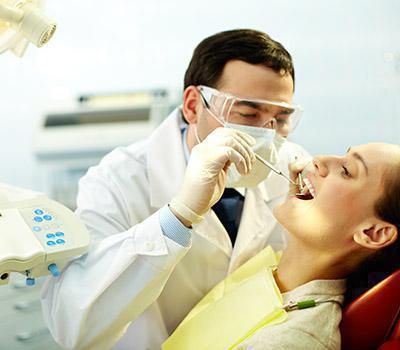Dental Implants
Oral implantology is the science and discipline concerned with diagnosis, design, insertion, restoration and for management of alloplastic or autogenous oral structures to restore the loss of contour, comfort, function, aesthetics, speech and/or health of the partially or completely edentulous patient.
A dental implant is a permucosal device that is bio-compatible and bio-functional and is placed on or within the bone associated with an oral cavity to provide support for fixed or removable prosthesis.
Selection of cases for implants is based on the following :
- Age limitations for case selection
- Anatomic prerequisites :
- Resorptive process
- Soft tissue situation
- Available bone
- Height of bone
- Width of bone
- Bone Shape
- Length of bone
Indications of implant therapy
- Edentulous upper arch
- Edentulous lower arch
- Multiple missing teeth
- Single tooth loss
Contraindications of implant therapy
Absolute contraindications for implant treatment are as follows:
- Uncontrolled diabetes
- Long-term immunosuppressant drug therapy
- Diseases of connective tissue
- Blood dyscrasias and coagulopathies
- Regional malignancy
- Metastatic disease
- Previous radiation to the jaws that might lead to postsurgical osteoradionecrosis
- Alcohol or drug addiction
- Severe psychological disorders
There are few intraoral contraindications for implant therapy. They are as follows :
- Unfavourable intermaxillary relationships
- Problematic occlusal and functional relationships
- Pathologies of alveolar bone
- Pathological alteration of the oral tissue
- Xerostomia ( reduced salivation )
- Macroglossia ( large tongue )
- Decayed teeth
- Poor oral hygiene
Based on shape and form implants can be classified as follows :
- Endosteal implants
- Subperiosteal implants
- Transosteal implants
- Intramucosal inserts/submucosal implants/subdermal implants
- Endodontic stabilizer
Based on surface characteristics implants can be classified as follows :
- Titanium plasma-sprayed coating
- Sand blasting-surface etching
- Laser-induced surface roughening
- Hydroxyapatite coating
Most commonly used biomaterials for implant therapy are titanium, titanium-aluminum-vanadium, cobalt-chromium, stainless steel, tantalum, gold, zirconium, platinum, inert ceramics, calcium phosphate ceramics, bioactive and biodegradable ceramics and polymers.
Surgical procedure usually involves :
- One-stage endosseous implant surgery
- Two-stage endosseous implant surgery
Despite the long-term predictability of implants, biologic, biomechanical, and aesthetic complications can occur in a small percentage of cases. Few complications are as follows
- Peri-implant mucositis: Inflammatory changes, which are confined to soft tissue surrounding an implant is termed as Peri-implant mucositis.
- Peri-implantitis: It is a progressive peri-implant bone loss in conjunction with soft tissue inflammatory lesion.
Clinical features of peri-implantitis :
- Colour changes, bleeding gums
- Calculus build-up, swelling
- Mobility of implant
Management of peri-implantitis
- Occlusal therapy
- Anti-infective therapy
- Surgical therapy
- Re-osseointegration
Maintenance after implant therapy
After surgical intervention, all patients are usually placed on a close recall schedule. It is advised to schedule maintenance visits at least every 3 months. This allows for monitoring of plaque levels, soft tissue inflammation, and changes in the levels of bone. The patient is advised to use soft, rounded bristle toothbrush. Toothpaste should be minimally abrasive, tooth cleaning procedures should be conducted by rinsing or brushing with chlorhexidine.
Office Hours
MON - FRI 9:00 am - 6:00 pm
SAT - SUN Closed




